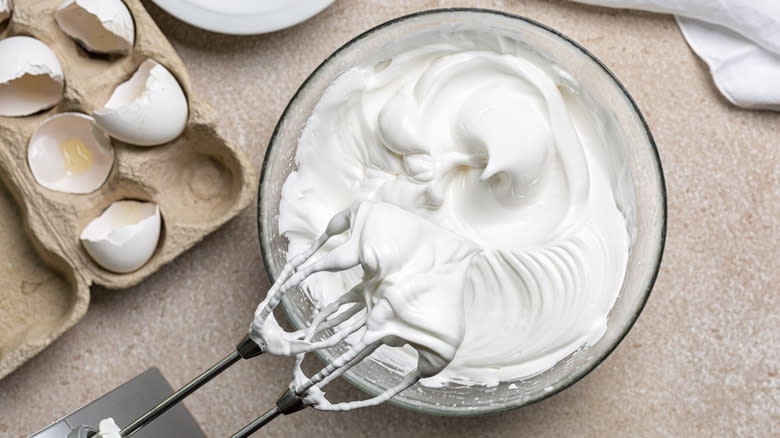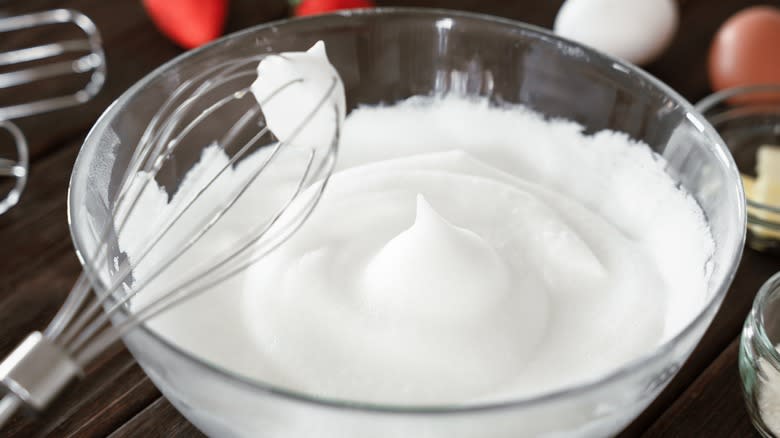The Telltale Sign That You Have Overbeaten Your Egg Whites

Whether it's a savory cheese soufflé or famously jiggly Japanese pancakes, whipped egg whites are the source of the light, fluffy texture of a wide range of dishes. Beating egg whites introduces air bubbles that interact with their proteins to create the characteristic foam we fold into batters or form into meringues. You'll see egg whites transform into foam as you beat them, going through various stages of liquidity. While you might think that the more you beat them, the fluffier they'll get, there is such a thing as overbeaten egg whites, and there are clear visual cues to signal that you've gone too far.
The first telltale sign that you're overbeating your eggs is the appearance of granules building up on the side of your mixing bowl. In short order, those stiff, smooth peaks will assume a clumpy, almost cottage-cheese like look. If this isn't a clear enough visual, the next stage of the process is essentially a reversal: The whites will begin to break back down into liquid.
One of the best ways to avoid overbeaten eggs is to master the visual cues of the various stages of whipped eggs. The notion of quitting while you're ahead or a less-is-more approach is the best rule of thumb to whipping egg whites. However, if you've reached the point of no return, not all hope is lost. You can correct a bowl of over-beaten whites by adding another raw egg white into the batter and whipping until smooth peaks form.
Read more: Hacks That Will Make Boiling Your Eggs So Much Easier
Best Practices For Whipping Egg Whites

Knowing the visual cues of correctly whipped egg whites is ultimately what will prevent overbeating eggs. Furthermore, different visual cues of doneness correspond with the best consistencies for specific recipes. The protocol is to observe the peak that forms at the tip of your whisk upon pulling the whisk out of the mixture and flipping it over.
The first stage of doneness, known as a soft peak, is the most liquid foam that will form a floppy peak at the edge of your whisk. Soft peaks are ideal for waffle and pancake batters. A bit more beating will result in the next stage of doneness, known as a firm peak. The foam will form a stiffer peak atop the whisk, but the tip will still fold over, giving it the appearance of the final coil of soft serve ice cream. The final stage, known as a stiff peak, occurs when the tip of your foamy peak stands straight up, holding its rigid form. Stiff peaks are the goal for the perfect meringue cookies.
The most streamlined and successful eggbeating process also involves factors such as temperature and equipment. You should use room-temperature egg whites for the fluffiest results. Stainless steel, copper, or glass bowls are preferable vessels for whisking egg whites because they're the most amenable to foam formation. Fat and grease are enemies of stiff egg whites, so ensure that your bowl and whisk are clean.
Read the original article on Tasting Table.


